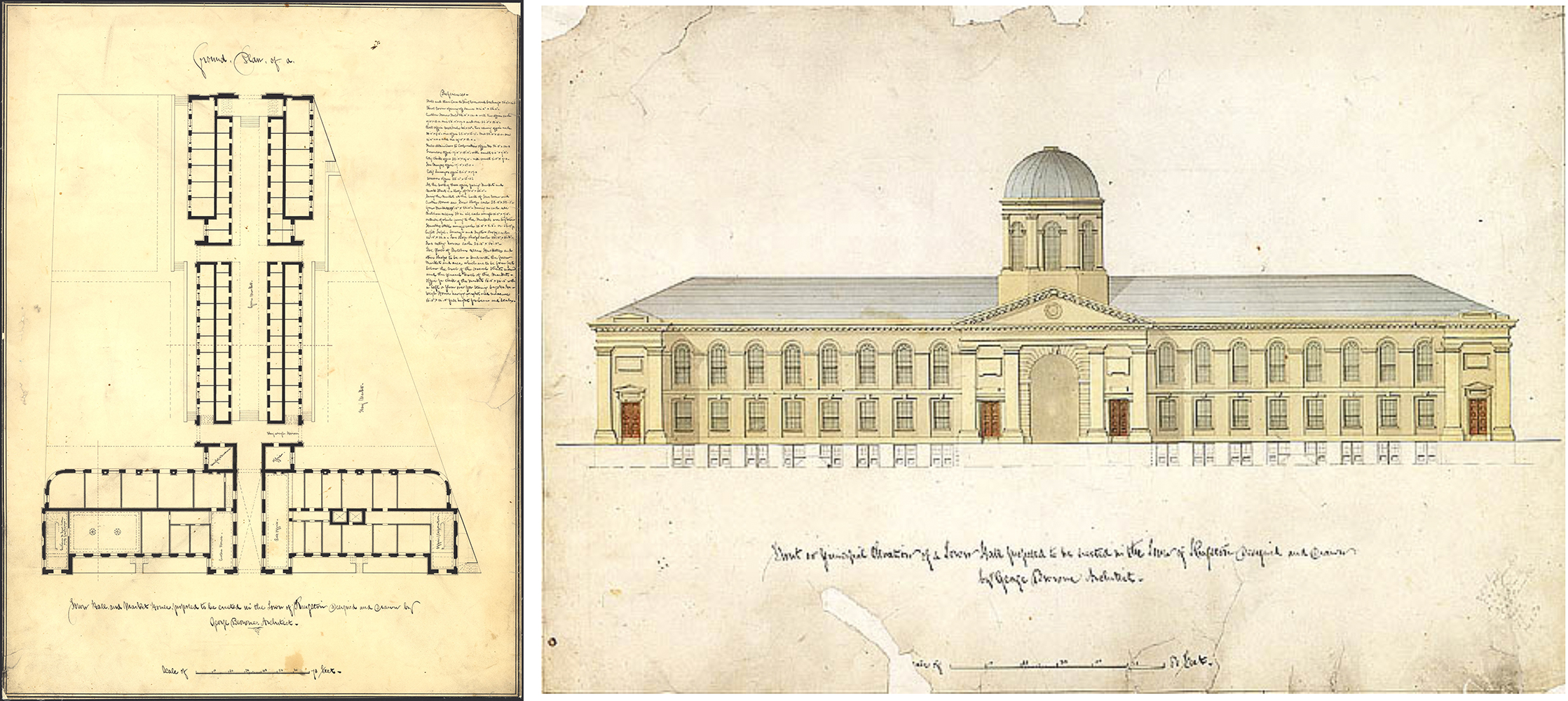Location: Kingston, Ontario
Date of Completion: 1844
Architect: George Browne
Dates of Renovations/Additions: 1865, 1909, 1956, 1960s, 1971, 2001
Architects of Renovations/Additions: Harry P. Smith and Neil MacLennan (1971), Alexander Wilson Architect Inc. (2001)
Nominated by: Ted Hsu, MPP (Kingston and the Islands)
“This building is excellent in its features of design, and substantial in the dimensions of its parts: the lights and shades are beautifully blended, and when viewed from a short distance has a light and elegant appearance.”
Letter from “Leo” to the Anglo-American
December 9, 1843, New York
Reprinted in the Kingston Chronicle and Gazette, December 16, 1843
Built with the ambition and enthusiasm of a nascent capital, Kingston City Hall stands proudly as one of the finest 19th century buildings in Canada and an ongoing space for community and governance in this Great Lakes city.
A Landmark for an Emerging Nation
After a devastating fire destroyed much of the city’s downtown in 1840—including the market building and the original municipal offices—Kingston was determined to rebuild a new, more ambitious centre reflective of its growing importance. And these ambitions were further fuelled when the very next year Kingston was selected as the capital of the newly United Province of Canada, which brought together the former provinces of Upper Canada (now Ontario) and Lower Canada (now Quebec). With its remarkable scale and beauty, Kingston City Hall was built as a reflection of the city’s worthiness and the lofty goals of its citizens.
Commissioned in 1842 and completed in 1844, Kingston City Hall was at the time the largest building ever to have been built in Canada. Spanning a full city block, its scale would have dwarfed the surrounding buildings and provided a clear landmark on the waterfront of this Great Lakes metropolis. Like many other city halls of this period, its programming was a diverse mix of community uses, including a town hall, municipal offices, post office, custom house, police station, commercial newsroom, and market. The cupola had been originally envisioned for a future library.
Kingston City Hall and Market Battery as seen in 1857. Image courtesy of Queen’s University Archive.
Stylistically, the building is reflective of architect George Browne’s own unique take on Neoclassical architecture, a style that emerged in Europe in the mid-18th century and that would often be used for civic buildings. Neoclassicism looked back at the architecture of Ancient Greece and Rome, romanticizing these civilizations and incorporating the architectural elements of their ruins. In the case of Kingston City Hall, the building exhibits symmetry, simple geometric shapes, and subtle Classical ornamentation. The front of the building is dominated by a central portico featuring Tuscan columns and a central gable reminiscent of a Greek temple.
Though the capital was moved to Montreal in 1843, a year before the completion of City Hall, the building remains a highly recognized national landmark and a protected national historic site since 1961. Its image is synonymous with Kingston and its distinctive dome is even featured in the city’s logo.
Changing with the Times
While we often think of buildings with such historic importance as being preserved exactly as they were originally built, the Kingston City Hall we see today has gone through a number of alterations over its 179-year history. Some of these changes have been the consequence of tragic events, while others responded to changing ideas about what makes a great civic building, as well as technological upgrades and maintenance to ensure its continued use.
In 1865, a fire destroyed the rear market wing along with its accompanying clock tower. Instead of rebuilding to the original plan, the city opted for a shorter market wing with a new square that continues to house a farmers’ market to this day. Additionally, while the original dome had been hemispherical with no clock faces or belfry, the clock from the original tower was moved over during the reconstruction. An additional fire in 1908 burned part of the dome and cupola, and these were rebuilt to incorporate a new Seth Thomas clock and bell. Even the iconic portico has not been free of alteration. The Tuscan portico was completely removed in 1958, though it was then reconstructed eight years later with the financial assistance of the federal government.
 Left: Original plans showing long market hall. Right: Elevation drawing of southern (front) facade. Images courtesy of Library and Archives Canada.
Left: Original plans showing long market hall. Right: Elevation drawing of southern (front) facade. Images courtesy of Library and Archives Canada.
Inside, alterations have happened at numerous times to adapt to changing uses. Having lost its status as the capital city, the original building was quite oversized for its intended purpose and its interiors were adapted for rental uses including a saloon, shops, churches, private associations, banks, and even a small theatre.
A number of other renovations and restoration projects have been carried out throughout the building’s history to adapt to new uses and standards. Most recently in 2001, Alexander Wilson Architect Inc. performed a number of interior renovations to the building that included both a comprehensive restoration of many of the original interior finishes, as well as inserting new spaces and technologies including optical-beam smoke-detectors that met the needs for a modern municipal building.
 Left: Renovated municipal offices. Right: Ceiling detail of municipal offices. Images courtesy of Alexander Wilson Architect Inc.
Left: Renovated municipal offices. Right: Ceiling detail of municipal offices. Images courtesy of Alexander Wilson Architect Inc.
This post forms part of our World Architecture Day Queen’s Park Picks 2023 series in which the OAA asked Ontario’s Members of Provincial Parliament (MPPs) to nominate a prominent building, past or present, in their riding for a chance to learn more about it. Check out the rest of the series to learn more about great buildings across the province!